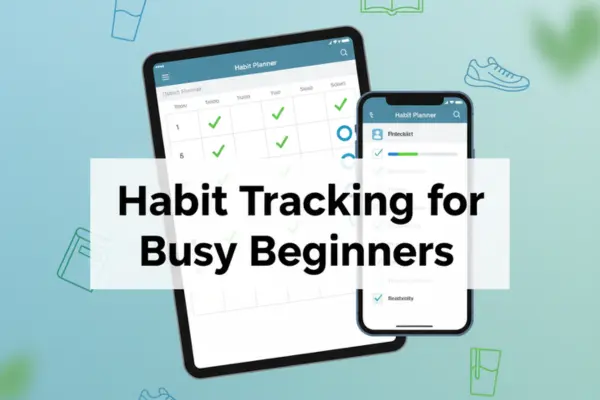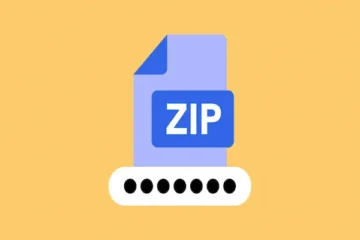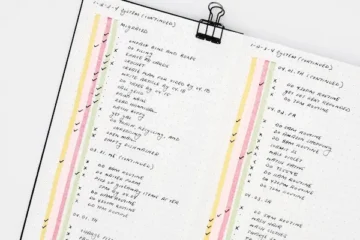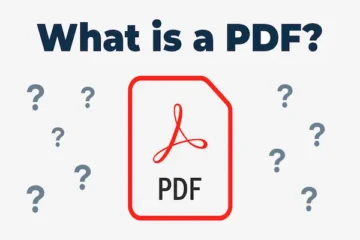Habit Tracking for Busy Beginners
Discover how to track habits with simple, practical strategies designed for beginners. Stay consistent and see results.
Keeping good habits can completely transform your life.
But for those who lead busy routines, staying consistent often feels nearly impossible.
It’s easy to start full of motivation, but after a few days, energy fades, distractions appear, and everything seems to fall apart.
If you’ve ever felt this way, know that you’re not alone.
The good news is that there’s a practical, simple, and effective way to change this scenario: learning how to track habits in a way that works, even for busy beginners.
When you track your habits, you create clarity, gain motivation, and can actually see progress happening in your life.
In this complete guide, you’ll discover step by step how to get started, which tools to use, the most common mistakes to avoid, and how to turn habit tracking into a light and enjoyable practice.

Understanding how to track habits
Before starting, it’s important to dig deeper into what habit tracking really means.
It goes far beyond simply ticking off a box on a checklist.
It’s about building a system that provides visibility of your daily actions, reveals your progress over time, and gives you the focus needed to keep moving forward.
When you learn how to track habits, you realize that the little things you do each day — drinking water, exercising, reading, saving money — are the real building blocks of long-term transformation.
Instead of relying on memory, tracking helps you turn invisible progress into something you can see and celebrate.
- Habits show where your time and energy go – they reflect your priorities, whether intentional or not.
- Tracking makes invisible progress visible – you see on paper or on an app how much you’ve been consistent, which eliminates the doubt of “am I really improving?”
- Seeing results builds motivation – every mark you add reinforces the belief that you are capable of change, no matter how small.
- Consistency turns small steps into big achievements – by repeating actions day after day, you transform what once felt difficult into a natural part of your routine.
- Clarity reduces anxiety – when you know exactly what you’re tracking, you avoid the overwhelm of trying to change everything at once.
- Celebration fuels discipline – the satisfaction of checking off a habit strengthens the will to keep going tomorrow.
By understanding these principles, habit tracking becomes less of a chore and more of a roadmap — one that shows exactly where you are and where you’re headed.
Benefits of how to track habits
Adopting the practice of tracking your habits brings far more than just discipline — it impacts your clarity, your emotions, and even your self-confidence.
When you make tracking part of your routine, you create a system that shows you exactly where your energy is going and how your small efforts are stacking up over time.
This is powerful because progress that once felt invisible suddenly becomes real and motivating.
Here are the key benefits explained in more depth:
- More clarity – Habit tracking gives you a clear picture of your strengths and areas for improvement. Instead of guessing, you know exactly what’s working.
- Less anxiety – Having a record creates structure and removes the stress of “am I doing enough?” You replace uncertainty with tangible proof of progress.
- More motivation – Every tick or checkmark is a mini-win that reinforces your effort. These small signals of success build momentum and keep you going.
- Greater productivity – Consistency leads to efficiency. When you repeat the same healthy or productive actions daily, you streamline your routines and save time.
- More confidence – Watching your progress unfold builds trust in yourself. You start believing in your ability to change, which fuels your desire to keep moving forward.
- Better long-term results – Habits tracked and repeated over weeks or months become ingrained behaviors. That’s how lifestyle changes actually stick.
- Healthier mindset – Instead of chasing perfection, you learn to celebrate progress. This makes the journey lighter and keeps you resilient even when you miss a day.
In short, learning how to track habits doesn’t just make you more organized.
It gives you peace of mind, helps you take control of your time, and makes you feel proud of every step you take toward your goals.
Common mistakes in how to track habits
Even though habit tracking looks simple at first glance, many beginners run into the same pitfalls.
These errors can turn a tool that should make life easier into something frustrating or even demotivating.
Knowing what not to do is just as important as learning the right way to track.
Here are some of the most frequent mistakes explained in more depth:
- Starting with too many habits at once – Taking on five or six new habits at the same time often leads to overload and failure. A better approach is to begin with just one or two key habits and build up gradually.
- Not setting clear goals – Vague goals like “be healthier” or “read more” don’t provide direction. Instead, define measurable actions such as “walk 20 minutes a day” or “read 10 pages before bed.” This clarity makes progress easier to see.
- Forgetting to log daily – Consistency is the heart of habit tracking. Missing logs creates gaps that weaken the system. Even if you only made partial progress, recording it keeps the chain intact.
- Using overly complex systems – Fancy apps, spreadsheets, or rigid systems often create friction. The simpler the process, the more likely you’ll stick with it. For beginners, a notebook or a basic app is usually enough.
- Not reviewing results – Tracking is only the first step. The real value comes from looking back at your data to identify patterns, celebrate wins, and adjust what isn’t working. Without review, progress stalls.
- Focusing only on perfection – Many people quit tracking when they miss a day or two. Remember, it’s about consistency over time, not flawless performance.
By avoiding these mistakes, you can turn habit tracking into a supportive ally instead of an extra burden.
It’s not about creating pressure — it’s about making your goals visible, your progress measurable, and your routine easier to manage.
How to track habits step by step
Now let’s go to the practical part: how to bring habit tracking into your daily life.
Choose 1 or 2 main habits
Start small. Focus on important actions such as drinking water, walking 15 minutes, or studying 20 minutes per day.
Set clear and realistic goals
For example: “read 10 pages a day” is much clearer than “read more.”
Use a simple tracking system
This can be an app, a spreadsheet, or even a paper notebook.
Log every single day
Even if you only did a little, write it down. Every bit of progress counts.
Review weekly
Look at your results, celebrate wins, and adjust what didn’t work.
Tools for how to track habits
There are many tools that make habit tracking easier, especially for beginners.
Choose the one that matches your lifestyle best.
| Tool | Type | Best for |
|---|---|---|
| Habitica | Gamified app | People who like to turn habits into a game |
| HabitBull | Simple app | People who want easy reports |
| Notion | Web & app | People who prefer full customization |
| Google Keep | Notes app | People who want simple and quick use |
| Physical planner | Pen & paper | People who like writing by hand |
How to track habits at work
Habit tracking isn’t only useful for personal life.
At work, it can significantly improve productivity and teamwork.
- Track habits like “reply to emails within 15 minutes” or “take short breaks every two hours.”
- Use visual boards, like Trello, to track collective habits.
- Celebrate milestones as a team to boost engagement.
How to track habits in personal life
In personal life, tracking habits is a way to bring balance and peace.
You can track habits related to health, learning, finances, and leisure.
- Health: drink 2 liters of water, sleep 8 hours, exercise daily.
- Studies: read daily, review content, watch one online class.
- Finances: record expenses, save a fixed weekly amount.
- Leisure: meditate, spend time with family, practice hobbies.
How to track habits with accountability
Sharing your progress with someone increases your chances of success.
It can be with friends, family, or coworkers.
- Create group chats for motivation.
- Set weekly goals and review them together.
- Use apps that allow sharing progress with others.
How to track habits and stay motivated
Motivation is the fuel that keeps habits alive.
And tracking is one of the strongest tools to avoid giving up.
- Reward yourself after completing a week of consistency.
- Use colors or symbols to make tracking visually fun.
- Remember that small steps matter more than big abandoned plans.
Best practices for how to track habits
To make habit tracking really work, follow these best practices:
- Keep your system simple and easy to use.
- Start small and increase gradually.
- Review your habits regularly.
- Celebrate small victories.
- Never aim for perfection — consistency is what matters.
Compliance and transparency
This article is educational and aims to teach how to track habits in a practical and accessible way.
We have no partnership, affiliation, or control over the apps, brands, or platforms mentioned.
The information shared is general and should be adapted to your personal reality.
Our mission is to provide safe, reliable content aligned with Google’s compliance and best practice guidelines.




